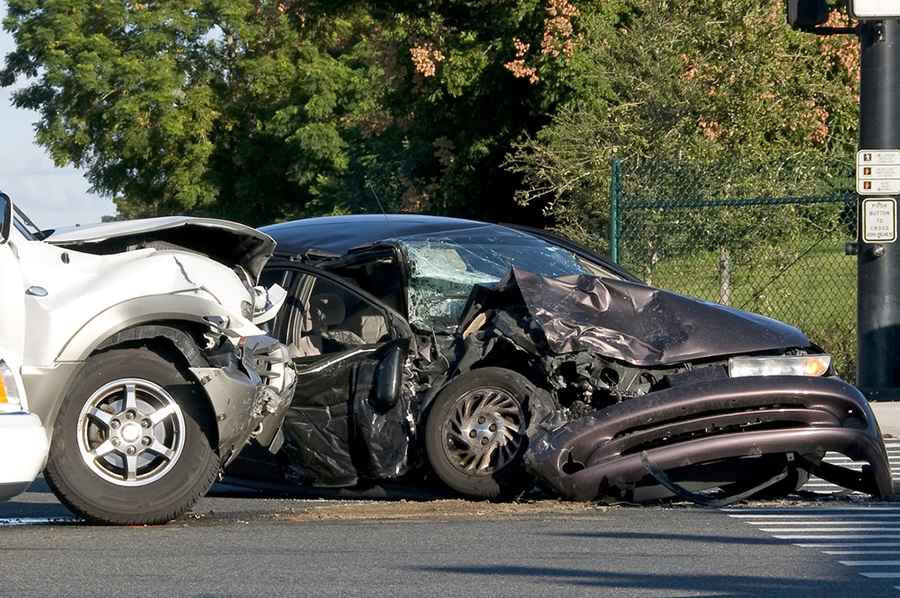Trends in Fatal Crashes Involving Speeding and Aggressive Driving
Speeding and aggressive driving are two major causes of fatal car crashes that have been a concern for many years. According to the National Highway Traffic Safety Administration (NHTSA), speed is a factor in approximately one-third of all fatal car crashes in the United States. Additionally, aggressive driving behaviors, such as tailgating and weaving in and out of traffic, increase the risk of crashes and fatalities on the road.

The consequences of fatal car crashes caused by speed and aggressive driving are devastating. Lives are lost, families are shattered, and communities are impacted in immeasurable ways. It is important to understand the causes and trends of these crashes in order to prevent them from occurring in the future.
What is Aggressive Driving and Speeding?
Speeding is defined as driving above the posted speed limit or driving too fast for the road conditions. When a driver exceeds the speed limit, they have less time to react to unexpected situations on the road, such as sudden stops or obstacles. Speeding increases the risk of crashes, as well as the severity of injuries in the event of a collision.
Speeding also reduces a driver's ability to control their vehicle, especially when taking turns or navigating curves in the road. Per the NHTSA, speeding can be placed into three general classifications: one or more drivers were engaging in street racing, exceeding the speed limit or too fast for the road conditions.
Aggressive driving, on the other hand, involves a combination of dangerous behaviors such as tailgating, road rage, improper passing, failing to use a turn signal, weaving in and out of traffic, and running red lights. Aggressive driving behaviors not only increase the risk of crashes but also contribute to road rage incidents, which can escalate into violent confrontations between drivers. Aggressive driving is often the result of frustration and impatience, and can be triggered by heavy traffic or other stressful driving conditions.
Recent Analysis Findings
Las Vegas law firm Harris & Harris Injury Lawyers partnered with data visualization company 1point21 Interactive to produce an in-depth analysis of fatal crashes involving speed and aggressive driving. The analysis leveraged a year of NHTSA fatal crash data (2018), to isolate all fatal crashes where at least one driver was reported to be speeding or driving aggressively.
The Highest and Lowest Rates of Fatal Crashes by State
The raw total of crashes do not accurately illustrate the whole story as states with higher populations would most likely have a higher number of fatal crashes. In order to understand the data, the analysis instead looks at the rate, calculating behaviors as percentages of the total fatal crashes.
The states with the highest rate of speed and aggression affecting motorists include:
- Alaska: 54%
- District of Columbia: 50%
- New Hampshire: 46%
- Rhode Island: 45%
- South Carolina: 43%
- Hawaii: 43%
- Illinois: 42%
- Vermont: 38%
- Missouri: 38%
- Montana: 38%
The states with the lowest rates include:
- Mississippi: 7%
- Florida: 9%
- Nebraska: 11%
- Kentucky: 15%
- Tennessee: 16%
- Louisiana: 17%
- Georgia: 18%
- Iowa: 19%
- New Jersey: 20%
- Idaho: 21%
When is the Most Dangerous Time to Drive?
The analysis found speed and road rage related fatal crashes occurred the most over the weekend:
- Saturday (1,637)
- Sunday (1,532)
- Friday (1,272)
The analysis also notes fatal crashes involving speeding and aggressive driving behaviors peaked at midnight and at 3 a.m., while the four-hour block between 6 p.m. and 10 p.m. was found to be the four deadliest hours across all days.
Who is Most Likely to be Driving in a Fatal Crash Caused by Speed or Road Rage?
A male driver aged 25 is the most likely to be the driver involved in a fatal crash due to speed or aggression-related crashes.
Takeaways from the Analyzing Fatal Crashes
The consequences of fatal car crashes caused by speed and aggressive driving can be devastating for all involved. Families are left to grieve the loss of loved ones, and survivors may suffer from physical and emotional trauma that can last a lifetime. In addition, these crashes can have a significant impact on communities, both economically and socially.
Preventing fatal car crashes is the responsibility of everyone. Combating speed and aggressive driving requires a combination of education, enforcement, and engineering solutions.
- Education campaigns can help raise awareness of the dangers of speeding and aggressive driving, and encourage drivers to adopt safer behaviors on the road. Tips to prevent aggressive driving or speeding behaviors can include:
- Leave 15 minutes earlier no matter where you are going
- Leave before or after heavy traffic times
- Listen to anything you find calming and relaxing
- Give the road your full attention
- Enforcement efforts, such as increased police patrols and traffic citations, can help deter drivers from engaging in dangerous behaviors.
- Engineering solutions, such as traffic calming measures and improved road design, can help reduce the risk of crashes and make roads safer for all users.
Image credit: Depositphotos